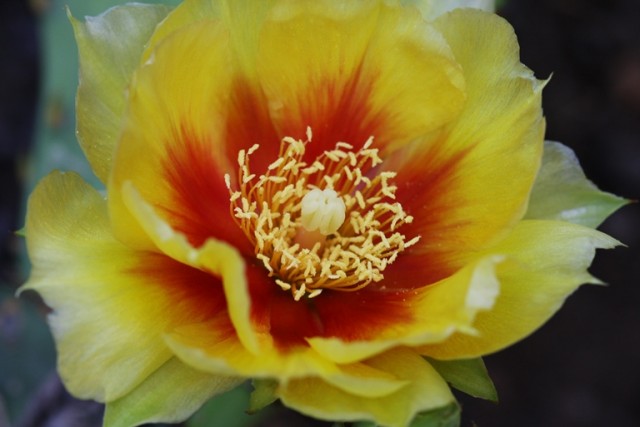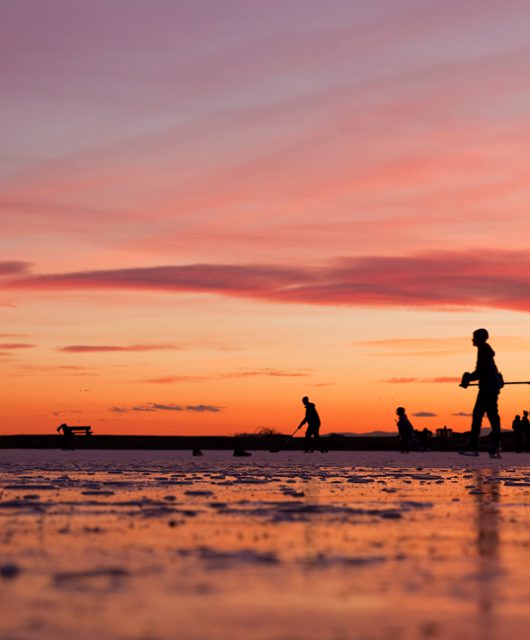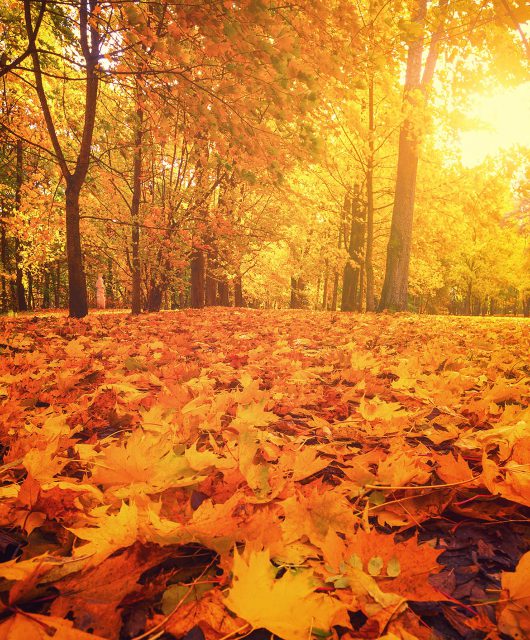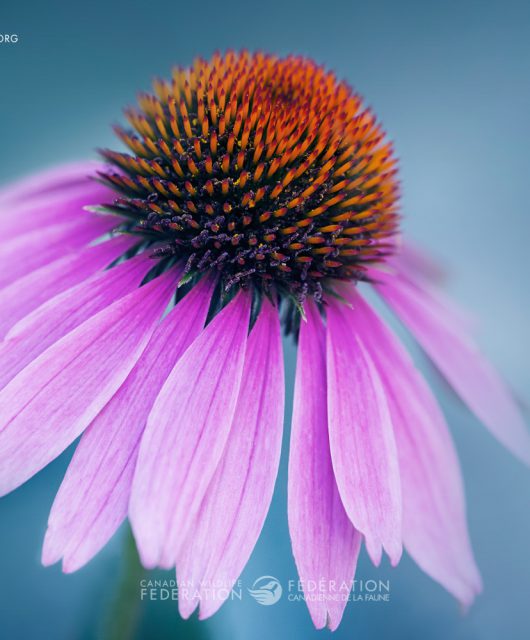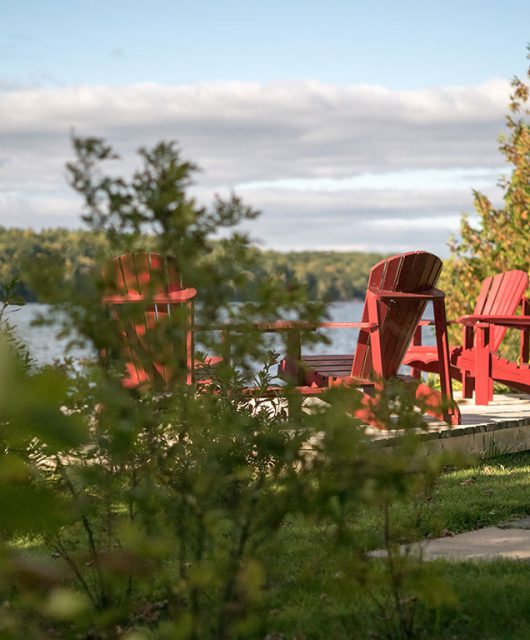[PHOTOS: CWF]
Summer is officially here and the summer issue of our seasonal newsletter Grow Wild is out, full of exciting news about our homepage photo contest, a new Wild About… poster that will be released later this summer and a new gardening sharing corner that should be ready by the end of the summer. Of course we still have our our regular columns that we hope will help you enjoy summer in your green space.
As to our our wildlife friendly gardens, many summer plants are blooming to carry on the colourful parade started in spring. It is a garden where we grow mainly native plants, only water them if they are new, where we nourish and keep pests at bay organically and where we incorporate other needs of wildlife like food, shelter and water. We have our trials and errors, but we love to learn and share and most of all, enjoy the beautiful plants and the gorgeous birds, butterflies and other creatures that come to live or visit.
Many plants are still flowering from past weeks, like our penstemons (which I’m sorry to say I never managed to get up in past weeks…I’ll pop a photo in below for you to see), Canada anenomes, coreopsis and – amazingly enough – the western bleeding hearts which started blooming weeks ago!
Our roses continue to bloom and are a noisy hub of all sorts of bees and other pollinating insects. I love how close I can poke around trying to get a good photo or to simply smell the flowers, all the while they busily leave me be.
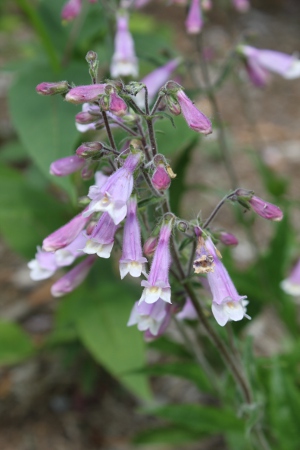
One of our many species of penstemons in our gardens.
Walking around the garden this week I noticed our cactus has just started its remarkable show in our Drought bed (the yellow and red flower in the topmost photo). I believe it may require a permit to purchase, as it is a protected species. Check with your local authority if you wish to add this plant to your garden. Other plants in flower include:
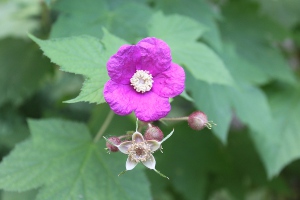
Purple flowering raspberry is a shade plant that can get rather bushy, dying back to the ground each year. It produces lots of large pink flowers whose berries are quickly gobbled up by the animals.
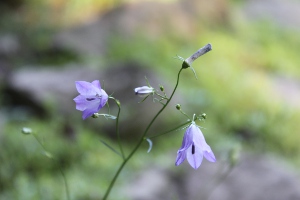
These harebells, our native Campanula rotundifolia, are pretty and dainty plants that grows in our Shade bed. We had it in the Hummingbird bed but we think it met a gardening accident years ago as its young leaves are so small and thin that they may have been mistaken for a type of grass. They need proper placing as the ones in our Shade bed can get rather wispy, although pretty among the border of rocks, while the others in the Hummingbird bed which is in full sun, were more full and upright. Either way, they are a pretty addition to the gardens.
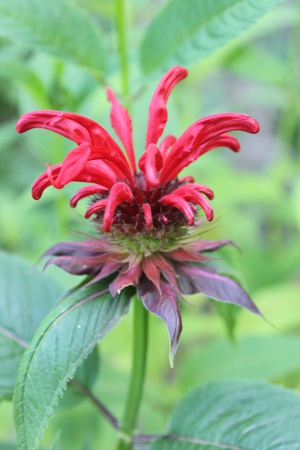
Bee balm is only native to a very small portion of Canada, but is not considered invasive it is a useful plant to grow to attract hummingbirds. Did you know that hummingbirds will go to all sorts of flowers with tubular type blooms, even the tiny pale flowers. We have a list of some of Canada’s hummingbird plants here.
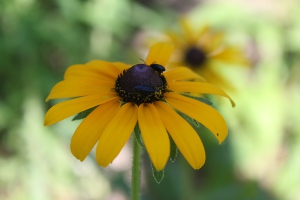
Our brown eyed Susans are just starting to bloom. I always think of them and Echinacea together as they both bloom at the same time and do so well in the garden. Our Echinacea purpurea is only just starting to bloom too, but I’ll save them for next week as they aren’t quite there yet. (Also about to bloom are thimbleweed, yarrow, Virginia creeper and some perennial sunflowers, to give you a sneak peak on next week’s blog!)
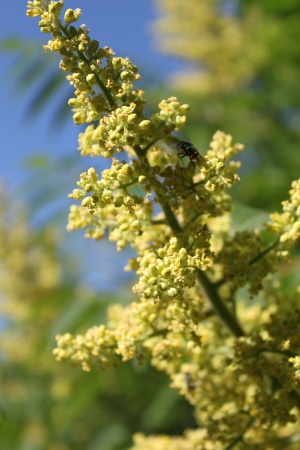
This staghorn sumac shrub/tree is in bloom and the pollinators are enjoying it like all the other flowers. It can get invasive but we pull out young ones and mow the grass around it, so it has never been able to become a problem in our gardens.
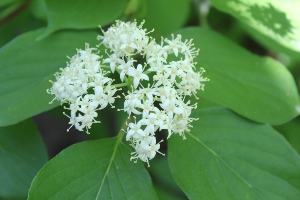
Grey dogwood is now in bloom. It’s nice to have the succession of flowering shrubs to decorate the garden.
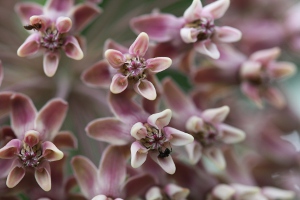
Do you recognize these flowers? They smell lovely, albeit a bit strong, and their leaves are necessary for our beloved monarch butterfly. Common milkweed! A plant that is gradually being accepted by Canadians, you can control them by snipping off their flowers once they are all droopy, after they have provided nectar and pollen to beneficial insects, but before they go to seed.
Below you can see them better.

See you next week – Happy Gardening!

